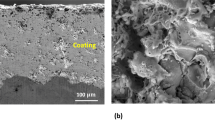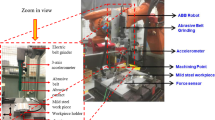Abstract
Improvement of chip control is a necessity for automated machining. Chip control is closely related to chip flow and it plays also a predominant role in the effective control of chip formation and chip breaking for the easy and safe disposal of chips, as well as for protecting the surface-integrity of the workpiece. Although several ways to predict the chip flow angle (CFA) have been subjected in some researches, a good approximation has not been achieved yet. In this study, using different indexable inserts and cutting conditions for turning of mild steel, the chip flow angles were measured and some of the collected data from this experimental study were used for training with a two hidden layered backpropagation neural network algorithm. A group was formed from randomly selected data for testing. The chip flow angle values found from multiple regression, neural network (NN) and studies of previous researchers under the same turning conditions of the present study were compared. It has been seen that the best prediction was obtained by neural network approach.
Similar content being viewed by others
References
Stabler GV (1951) The fundamentals geometry of cutting tools. Proc Inst Mech Eng 165:14–21
Stabler GV (1964) The chip flow law and its consequences. Proc. 5th Int. MTDR Conf, pp 243–251
Colwell LV (1954) Predicting the angle of chip flow for single point cutting tools. Trans ASME 76(2):199–204
Okushima K, Minato K (1959) On the behaviours of chip in steel cutting. Bulletin JSME 2(5):58–64
Zorev NN (1966) Metal cutting mechanics. Pergamon Press, Oxford
Armarego EJA (1971) A comparison of theories for chip-flow prediction in turning operations. Har Armstrong Conf, pp 369–379
Spaan C, Geodemonat A (1971) The breakability as an aspect of machinability-a computer simulation of chip formation. SME Paper MR, pp71–154
Usui E, Hirato A (1978) Analytical prediction of three dimensional cutting process: part 2 chip formation and cutting force with conventional single point tool. ASME J Eng Ind 100:229–235
Jiang YC, Zhang YZ (1984) Experimental research of the chip flow direction and its application to the chip control. Ann CIRP 33(1):81–84
Young HT, Mathew P, Oxley PLB (1987) Allowing for nose radius effect in predicting the chip flow direction and cutting forces in bar turning. Proc Inst Mech Eng 201(C3):213–226
Van Luttervelt CA, Pekelharing AJ (1976) Chip formation in machining operation at small diameter. Ann CIRP 25(1):71–76
Simon H (1999) Neural networks a comprehensive foundation. second edn. Prentice-Hall, Englewood Cliffs, NJ
Leondes TC (1998) Neural network systems techniques and applications – control and dynamic systems. Academic, San Diego, CA
Author information
Authors and Affiliations
Corresponding author
Appendix
Appendix
1.1 APPENDIX A-Approximation of Okushima and Minato
In this section, the approximation of Okushima and Minato on chip flow angle is given. They presented some equations, as follow, in six cases. In the present study, some of these equations have been used for comparing their approximation with the others.
Case 1 f ≤ rsinχ1 and a ≥ r:
Case 2 f ≤ rsin χ1 and a< r:
Case 3 \(r{\left( {1 + \frac{1} {{\sin \chi _{1} }}} \right)}\) ≥f>2rsinχ1 and a≥r:
Case 4 \(r{\left( {1 + \frac{1} {{\sin \chi _{1} }}} \right)}\) ≥f>2rsinχ1 and a<r:
Case 5 f> \(r{\left( {1 + \frac{1} {{\sin \chi _{1} }}} \right)}\) and a>f . \(\tan \chi _{1} - \frac{r} {{\cos \chi _{1} }}\):
Case 6 r=0:
1.2 APPENDIX B-Approximation of Young et al.
In this section the approximation of Young et al. on chip flow angle is given. They derived an equation for predicting the chip flow angle as follows. The general form of Young’s equation is:
NUM and DEN are given for two different cases.
Case 1 \(a \leqslant r{\left( {1 - \sin \chi } \right)}\)
where the limits of integration are:
Case 2 \(d > r{\left( {1 - \sin \chi } \right)}\)
where the corresponding limits of integration are:
Rights and permissions
About this article
Cite this article
Kiyak, M., Altan, M. & Altan, E. Prediction of chip flow angle in orthogonal turning of mild steel by neural network approach. Int J Adv Manuf Technol 33, 251–259 (2007). https://doi.org/10.1007/s00170-006-0460-3
Received:
Accepted:
Published:
Issue Date:
DOI: https://doi.org/10.1007/s00170-006-0460-3




